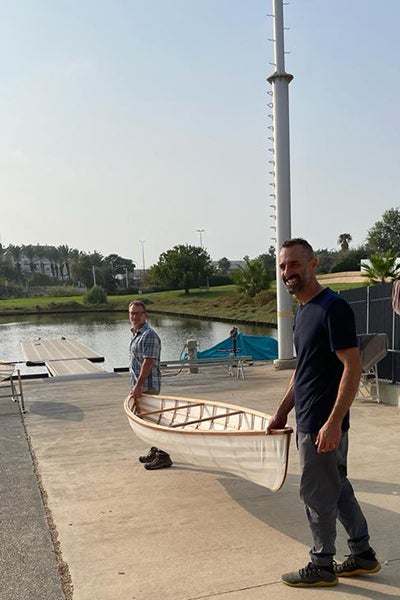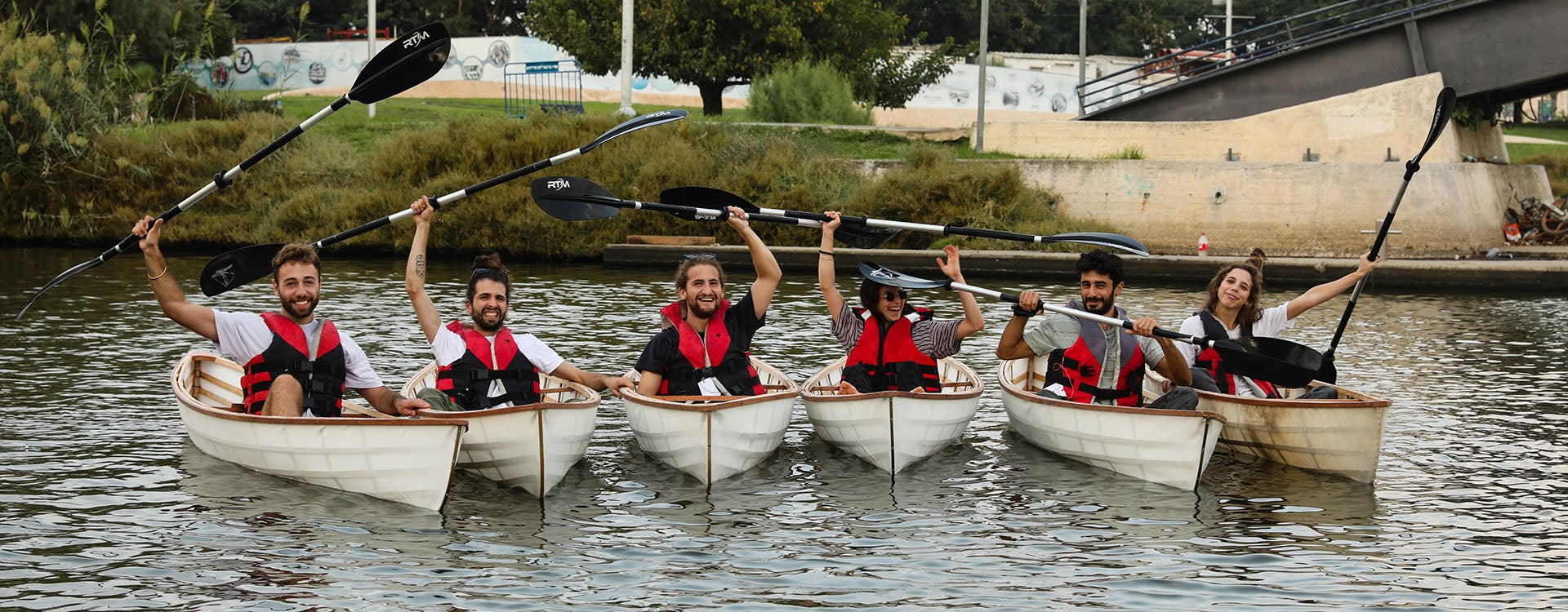BUILDING BOATS AND BRIDGES
ECU boat building class fosters friendships, teaching exchange
A boat building course at East Carolina University has become the perfect vessel to build bridges with other universities and institutions at home and abroad.
Since 2016, School of Art and Design faculty member Gerald Weckesser has taught boat building to ECU students and at the Penland School of Craft in western North Carolina. Last summer, one of Weckesser’s Penland students, Neil Nenner, liked the course so much that he invited Weckesser to teach at his home university — Shenkar College of Engineering, Design and Art — in Israel.
“I used to race sailing boats and teach yacht courses. I love boats and I love craft so it seems like the best experience I could get. That is the reason why I chose his workshop at Penland,” Nenner said. “I thought this was so good and I have learned so much about woodworking, I have to bring him to Israel and have my students learn and enjoy this too.”
While complicated to organize, Nenner said they found the budget and arranged all the materials. Weckesser traveled in October to Tel Aviv where students worked in groups of four or five to build seven boats in seven days.
“We made it the opening course for my third-year class,” said Nenner, who teaches furniture design. “For a design student, the task of making a chair during one semester is very challenging. Now if you made a boat before that, a chair doesn’t look so hard.”
Nenner said the semester ran smoothly and everyone could feel the impact of the opening course on the students.
“In general, I believe that creativity studies are always better when you touch materials and build things,” he said. “Making something is rewarding and satisfying, and you cannot invent new things without a basic understanding of form, structure, materials characteristics and so on. The canoe, much like the chair, is an object that combines all these essentials, and once you get the perfect balance, it is absolute beauty.”
Weckesser’s 10-day trip to Tel Aviv is a budding collaboration with Nenner, who has been invited to teach as a guest lecturer at ECU. Weckesser has been invited back to Israel in the next academic year, too. “Our second-year students are already asking about their workshop!” Nenner said.

Neil Nenner, right, took Weckesser’s class at Penland School of Craft last summer. Nenner has since invited Weckesser to teach at his home university in Israel. (Contributed photo)
“How do we take this experience and build off it and create a more lasting experience and grow from it?” said Weckesser, an ECU Honors College faculty fellow. “Anytime we have the opportunity to build bridges between institutions, we start to build a relationship. If we expand that dialogue, we find commonalities.”
Weckesser said he has had great support from Linda Kean, dean of ECU’s College of Fine Arts and Communication, Kate Bukoski, director of the School of Art and Design, and the Office of Global Affairs.
Weckesser and Nenner have talked about possibly teaching a course together at Penland, where several ECU art and design alumni work: Adam Atkinson is a resident; Nadia Massoud is studio operations manager; and Autumn Brown is iron studio coordinator. Former Penland resident and alumna Laura Wood now has her own jewelry business in Asheville. Addison Brown, an ECU photography graduate, was Weckesser’s assistant for his Penland class, which had students from across the United States and abroad.
This summer, Weckesser will teach boat building at ECU during Summer Session 1. The class is open to any ECU student and will be capped at 10. The material fee will be about $350, and each student will leave the class with their very own canoe.
The course began after Weckesser and ECU art and design colleague Judd Snapp attended a three-day academic symposium exploring the intersection of art and science at the Coastal Studies Institute in 2015. The two had been thinking about starting a boat building class and were able to offer ECU’s first one in summer 2016.
“Ultimately what I’d like my students to come away with from this course is a historical understanding of the craft, the process of thinking through making something, where they’re learning not just by listening or by watching, but by doing,” Weckesser said.
Coursework like the boat building class allows students to develop solutions for design problems and to see how their work impacts the aesthetics, form and function of an object, Bukoski said.
“Will the boat float or sink? The patience, persistence and creativity required in art classes helps students develop a unique set of skills that are invaluable and applicable in all aspects of their lives,” she said.
Weckesser’s long-term goal is to build a working sailboat based on historic drawings of vessels that once plied eastern North Carolina waters, pulling in the expertise of ECU engineering and maritime history students.
Weckesser grew up in Michigan and later worked with boat builders and learned to sail in New England.
“He has the perfect combination of generosity and professional knowledge to be able to make such hard work so interesting and rewarding,” Nenner said.

Shenkar College students try their boats for the first time in Israel. (Contributed photo)
